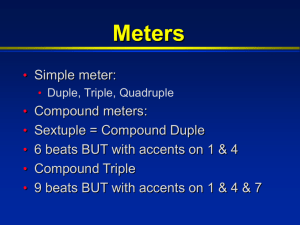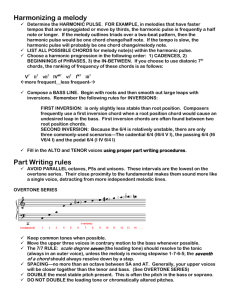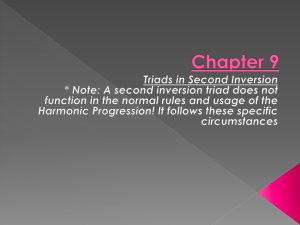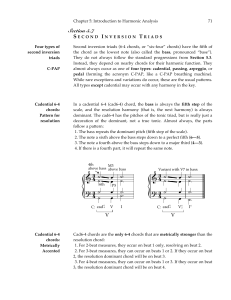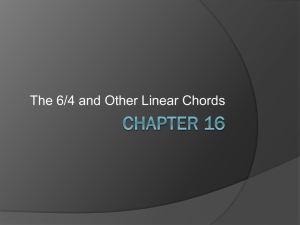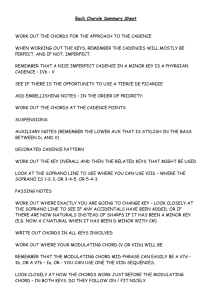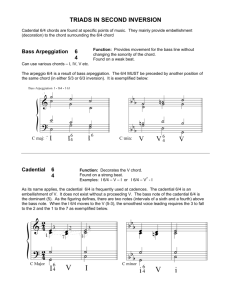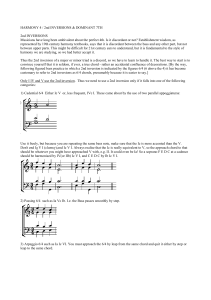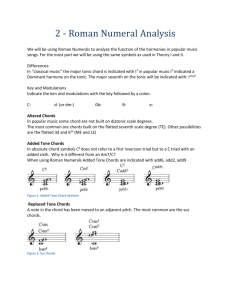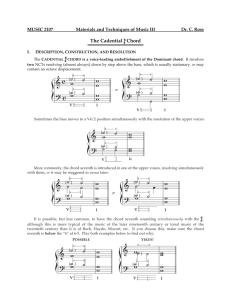Theory 2 Dr. Crist Second Inversion Chords
advertisement
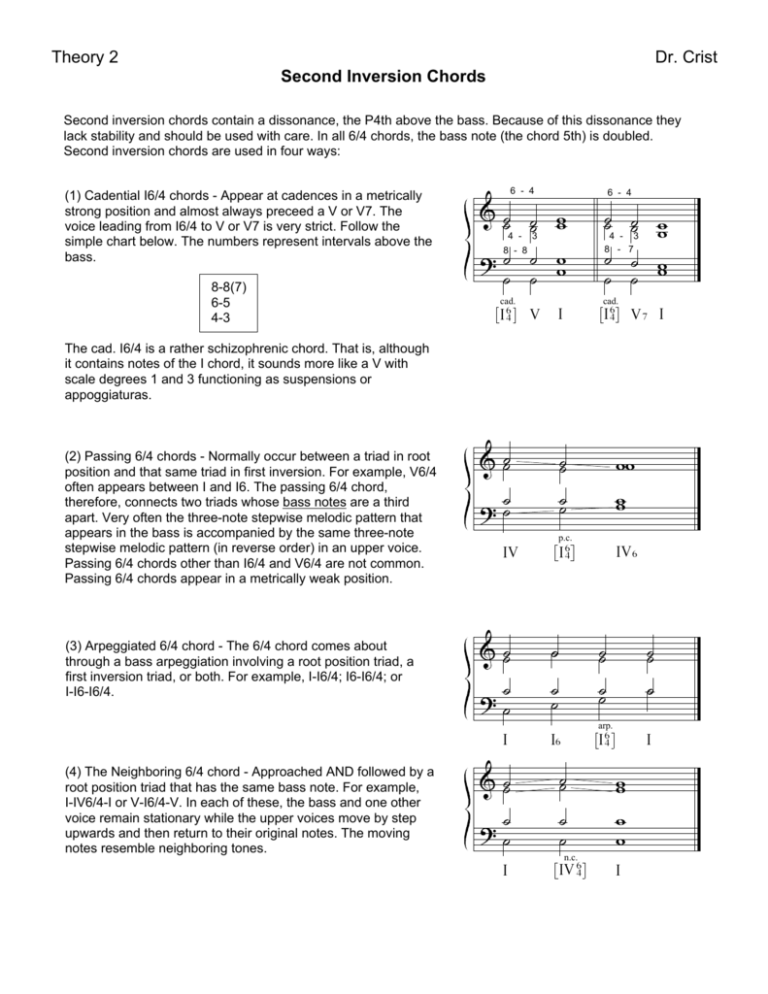
Theory 2 Dr. Crist Second Inversion Chords Second inversion chords contain a dissonance, the P4th above the bass. Because of this dissonance they lack stability and should be used with care. In all 6/4 chords, the bass note (the chord 5th) is doubled. Second inversion chords are used in four ways: (1) Cadential I6/4 chords - Appear at cadences in a metrically strong position and almost always preceed a V or V7. The voice leading from I6/4 to V or V7 is very strict. Follow the simple chart below. The numbers represent intervals above the bass. 8-8(7) 6-5 4-3 6 - 4 6 - 4 4 - 3 8 - 8 4 - 3 8 - 7 cad. IP cad. V I IP V7 I The cad. I6/4 is a rather schizophrenic chord. That is, although it contains notes of the I chord, it sounds more like a V with scale degrees 1 and 3 functioning as suspensions or appoggiaturas. (2) Passing 6/4 chords - Normally occur between a triad in root position and that same triad in first inversion. For example, V6/4 often appears between I and I6. The passing 6/4 chord, therefore, connects two triads whose bass notes are a third apart. Very often the three-note stepwise melodic pattern that appears in the bass is accompanied by the same three-note stepwise melodic pattern (in reverse order) in an upper voice. Passing 6/4 chords other than I6/4 and V6/4 are not common. Passing 6/4 chords appear in a metrically weak position. p.c. IV IV6 IP (3) Arpeggiated 6/4 chord - The 6/4 chord comes about through a bass arpeggiation involving a root position triad, a first inversion triad, or both. For example, I-I6/4; I6-I6/4; or I-I6-I6/4. arp. I (4) The Neighboring 6/4 chord - Approached AND followed by a root position triad that has the same bass note. For example, I-IV6/4-I or V-I6/4-V. In each of these, the bass and one other voice remain stationary while the upper voices move by step upwards and then return to their original notes. The moving notes resemble neighboring tones. I I6 IP I n.c. IVP I More on the Cadential Tonic Six-Four The cadential tonic six-four functions to announce the cadence and in doing so delays the arrival on the dominant. The cadential tonic six-four is a tonic triad in second inversion that actually exhibits more of a dominant function than a tonic function. In fact, some theorists analyze the tonic six-four as a V(6/4-5/3). The intervals of the 6 and 4 over the bass of the I6/4 are appoggiaturas (or perhaps suspensions if they are held over from the previous measure) to the 5 and 3 over the bass of the V respectively. The 6 and 4 do not function as root and 3rd of the chord but behave as dependant tones that embellish the 3rd and 5th of the dominant chord to which they resolve. In this respect, one can think of the I6/4 as a V with an added dissonance. In the cadential tonic six-four, the bass is doubled. Since the chord is actually a dominant functioning chord, it makes sense to double the dominant pitch. The tonic six-four holds a stronger metric position than the V that follows it. It occurs on a metric beat that is at least as strong as the metric beat on which the V falls. Use brackets and “cad.” when analyzing.

